Social media is a cut-throat world.
The almighty algorithm makes it challenging to reach your followers — let alone get in front of new audiences.
And even if you manage to figure that out, you’re still fighting for attention with other brands in your niche.
But it’s not all bad news because those same rivals can be a major source of inspiration for your own social media strategy, helping you identify new opportunities and close gaps in your content calendar.
Read on to learn how to run an effective social media competitive analysis.
Step #1: Identify Your Social Media Competitors
Google might seem like an odd place to start a social media audit.
But it’s one of the most effective tools for identifying your true competitors — not just the brands you think you’re competing with, but those actively targeting the same audience as you.
For this step in the process, we’ll use the Google Adwords Keyword Planner to find sites ranking for similar keywords. Even if you don’t currently advertise with Google, the Keyword Planner is free, making it one of our favorite competitive analysis tools.
Once logged in, click the big box that says Discover new keywords.
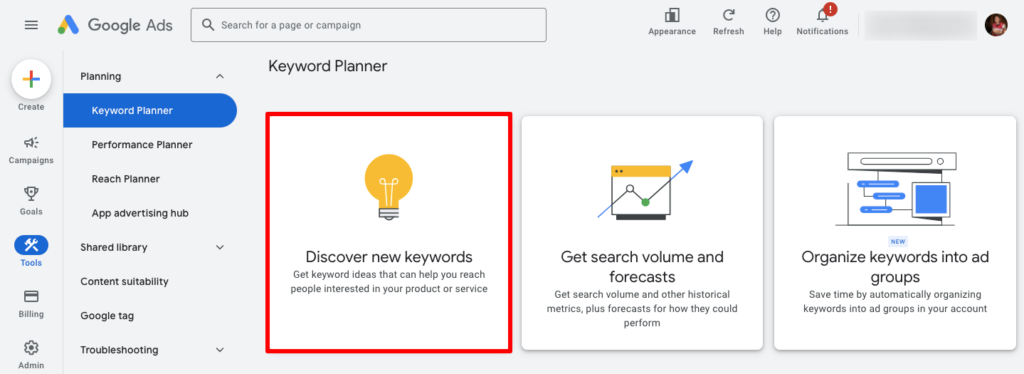
Then, hit Start with a website, copy-paste your web address into the URL bar, and choose Use the entire site.
For the following scenario, let’s imagine we work for Brooklinen (I don’t, but man, those are some soft sheets).

Now we’re presented with a list of keywords, ordered by relevance to our (well, Brooklinen’s) website:
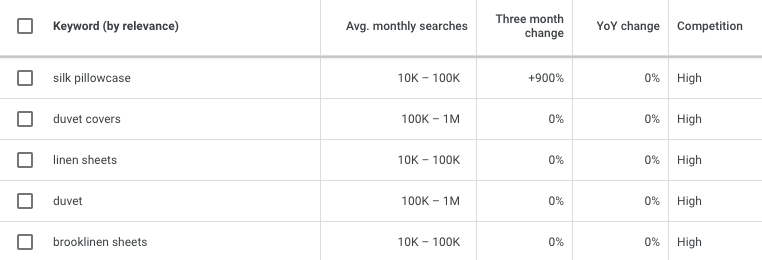
Exclude any branded terms (like “Brooklinen sheets”), then pick the top 5 – 10 keywords and Google them.
It’s a safe bet the likes of SILKSILKY and Blissy are among Brooklinen’s top competitors:

Choose maybe a half-dozen and make a note of them: these are the brands we’ll be digging into in our social media competitive analysis.
Step #2: Gather Top-Level Social Media Data
You’ve identified your competitors — now it’s time to find out what they’re doing on social media.
Start by gathering the following top-level information and social media metrics:
- Which social networks are they on?
- How large is their following?
- What is their engagement rate?
On that final bullet: unless you fancy adding up all their likes and comments yourself, you’ll need a tool to calculate the engagement rate. There are a couple of reasonable free tools available (like HypeAuditor’s free Instagram engagement calculator and Phlanx’s engagement calculator). However, you’ll be better off using a paid platform like Hootsuite or Sprout Social.

Finally, be sure to gather all the same data points for your social channels to compare performance against your competitors.
Step #3: Capture Platform-Specific Data
It’s time to get granular by diving into each of your competitors’ social accounts.
You’ll be gathering slightly different data points for each social media channel — because every platform is different.
Here are the types of data you should capture for five of the largest social platforms:
Facebook Competitive Analysis
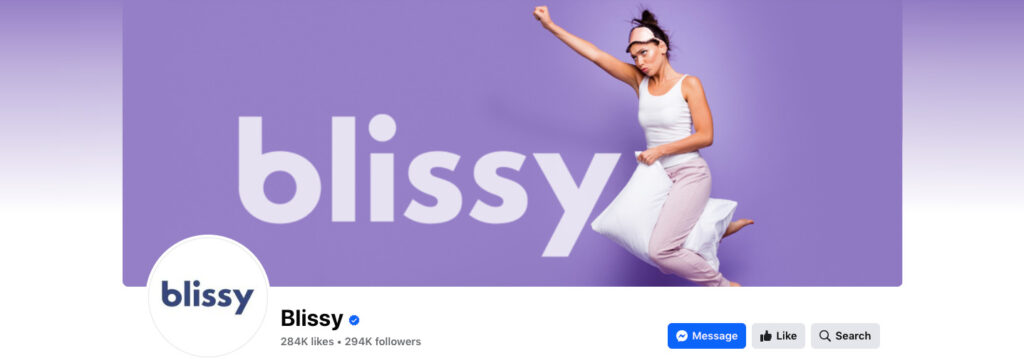
- How often do they post?
- What types of media do they post? What’s the percentage split of each post type?
- What do they say in their Facebook intro copy?
- What tabs or features do they use (e.g., do they have a shop section)?
- What themes do they post about?
- What tone of voice do they use?
- What is the primary purpose of this account?
- What hashtags do they use? Do they have a branded hashtag?
Instagram Competitive Analysis
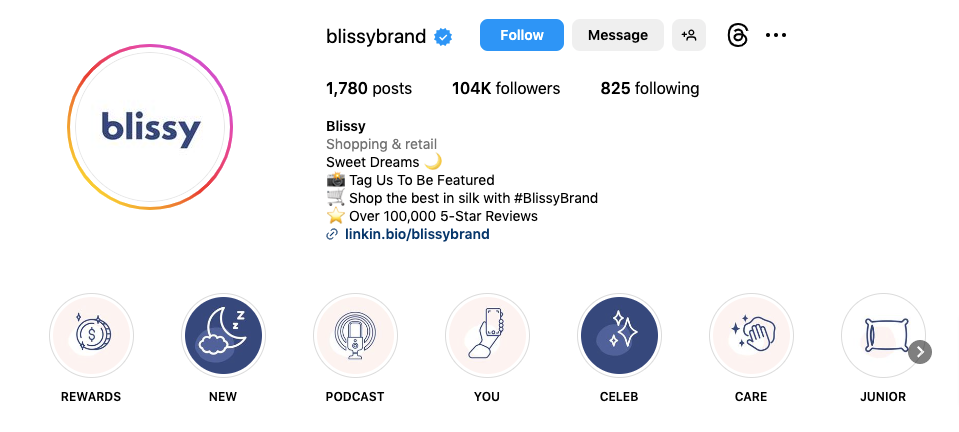
- How often do they post?
- What types of media do they post? What’s the percentage split of each post type?
- What do they say in their Instagram bio?
- Do they use a link-in-bio tool? How often are they updating it?
- Do they use Threads?
- Do they post Instagram Reels and Stories? How often do they publish each?
- Do they share Stories highlights? How many do they have, and what are they about?
- What does that content look like?
- Do they use a brand-specific hashtag?
- What are their most-used hashtags?
- What themes do they post about? How does this vary across different post types (e.g., Stories, Reels, and image posts)?
- What is the primary purpose of this account?
- What brand persona do they adopt?
TikTok Competitive Analysis
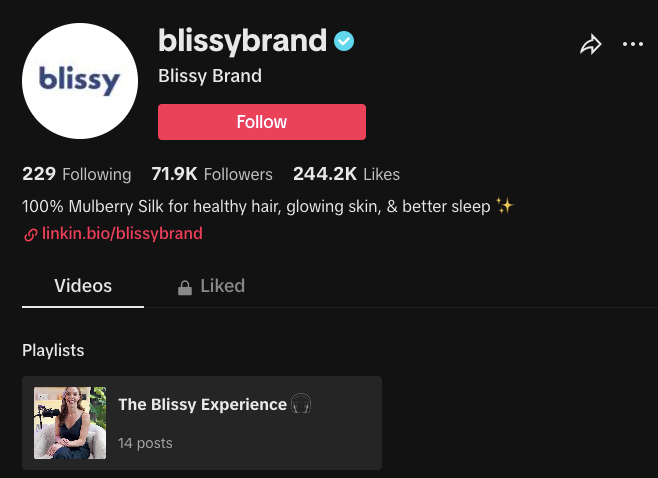
- How often do they post?
- What key features or information do they highlight in their TikTok bio?
- Do they use a link-in-bio tool? How often are they updating it?
- Do they have a branded hashtag?
- Do they create TikTok playlists? How many do they have, and what are they about?
- What are their most-used hashtags?
- What themes do they post about?
- What is the primary purpose of this account?
- What brand persona do they adopt?
X/Twitter Competitive Analysis
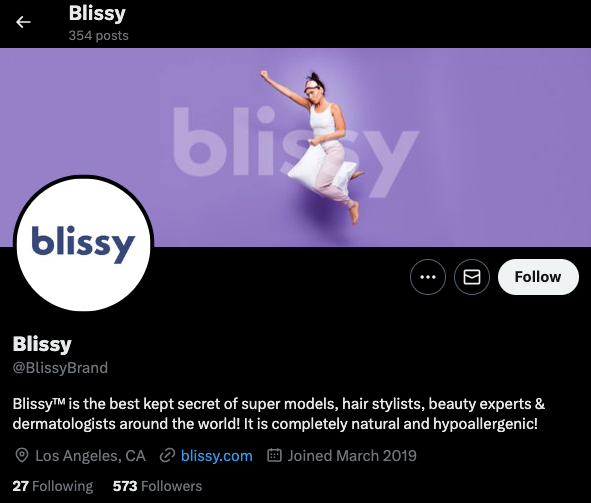
- How often do they post?
- What key features or information do they highlight in their X bio?
- Do they have a verified account?
- Do they use a link-in-bio tool?
- What do they post about?
- What types of content do they share?
- What is the primary purpose of this account?
- What is their tone of voice like?
- Do they use hashtags? If so, which do they use most often?
Pinterest Competitive Analysis
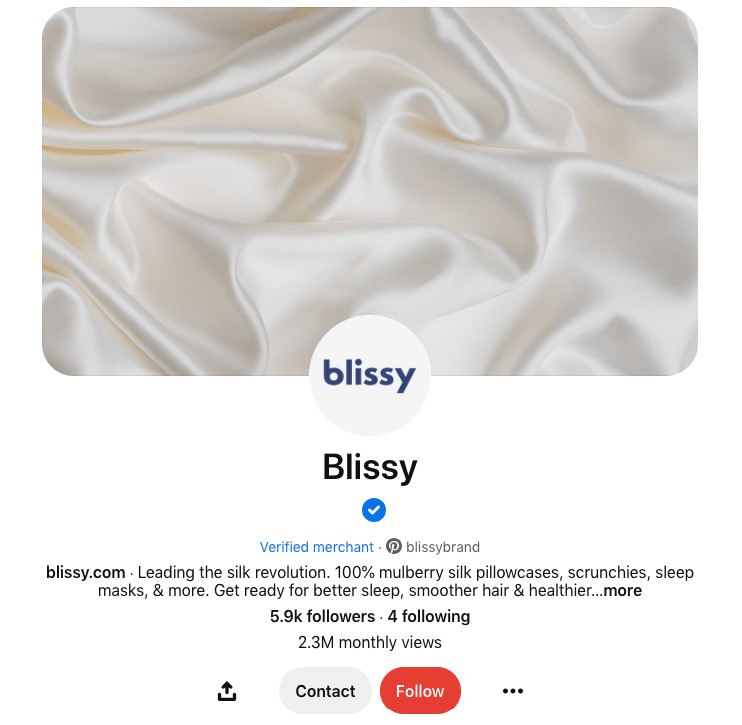
- What information do they share in their bio?
- How many monthly views are they generating?
- What topics do they post about?
- What is the primary purpose of this account?
- How would you describe their tone of voice?
- What is their ratio of image to video content?
- What hashtags do they use most often? Do they have a branded hashtag?
Once you’ve analyzed one of your rivals, rinse and repeat for all the competitors you identified in step #1.
Of course, the platforms you analyze will depend on your niche and the audience you’re targeting. Just because Blissy has a LinkedIn profile, that doesn’t mean it’s worth monitoring from the perspective of a B2C brand like Brooklinen — (most) people aren’t going to buy bedding after seeing a LinkedIn post.
However, LinkedIn suddenly becomes relevant if recruitment or corporate social responsibility are key focuses of our imaginary social media strategy for Brooklinen. You’ll have to make a call on which platforms to include and exclude based on your overarching marketing goals.
Having conducted your analysis, don’t forget to add all the information you find to a spreadsheet or document so you can compare all your data points side by side.
Step #4: Perform a SWOT Analysis
By this point, you’ve collected a ton of juicy qualitative and quantitative data.
But all that information is only useful when you give it context: why does this matter, and what can we learn from it?
The best approach is to take a page from the business school handbook and perform a SWOT analysis:
- Strengths: These are areas where you’re currently ahead of the competition.
- Weaknesses: By contrast, these are how you’re lagging behind your rivals.
- Opportunities: Based on the information you’ve gathered (plus your knowledge of changes in the social media landscape), opportunities are areas in which you’ve got the potential for big performance gains.
- Threats: Lastly, threats are trends that could disrupt your niche and adversely affect your social media performance.
Here’s an (extremely simple) example of how that could look for Brooklinen:

As you may have gathered, the first two categories — strengths and weaknesses — speak to internal factors related to your existing performance, whereas the second two — opportunities and threats — are about external matters that could shake up the status quo in your niche.
Step #5: Bring It All Together
You’ve got a spreadsheet full of valuable information.
But, on its own, that’s not enough to build a social media strategy around.
That’s why the final step in the process is to bring it all together by pulling out all the key learnings you’ve identified and packaging them up in a user-friendly format that you can share with all relevant stakeholders (like senior leaders and other people on your social media team).
Here are a few tips to do this effectively:
- Visualize key data points: Let’s be honest: spreadsheets aren’t easy on the eye; it’s easy to miss important information amid all those columns of numbers. Use graphs and charts to communicate key data, such as your social media followings and engagement rates, versus your competitors.
- Select a handful of key learnings: Most people don’t need (or want) to dig through every takeaway in your social media competitive analysis — they just want the headlines. Pull out your 5 – 10 most important insights and write them up as bullet points.
- Explain why it matters: “Blissy has more followers on TikTok than Brooklinen!” Okay, so what? Explain why your key learnings are important and what could happen if you don’t address them. For instance, Brooklinen’s comparatively small TikTok following could indicate that they’re failing to appeal to younger demographics. This could hit the business hard as those demographics gain more spending power.
- Offer actionable solutions, not problems: Spotted a major threat for your brand? Provide actionable steps to tackle it. Following the previous example, Brooklinen may need to invest more heavily in platforms that skew younger, like Snapchat and TikTok.
- Share best practice examples: Don’t just describe the types of content you should be sharing based on your competitive analysis; include real-world examples of competitors that are getting it right.
Want to learn more about how to stand out in a crowded marketplace? Sign up for one of our upcoming social media conferences.
Featured image by Freepik.









